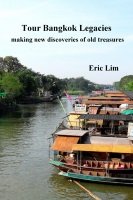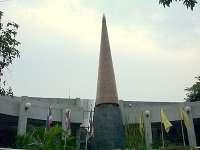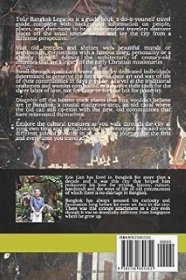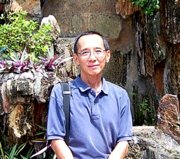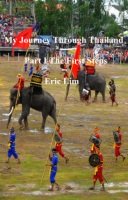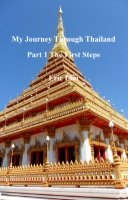- Home
- Democracy Monument
- 6 October 1976
Remembering 6 October 1976
the forgotten
massacre
By Eric Lim
6 October 1976 was another black mark in Thai politics. After 14 October 1973, a new PM, new constitution and fresh elections gave hope for a change for the better.
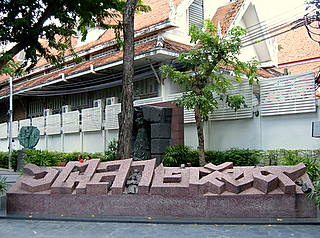
6 October 2519 (1976)
But from 1973 – 1976, a series of weak coalition governments floundered in a chain of musical chairs. By 1976 the political mood was somber.
A unified Vietnam after the Communist victory and the killing fields in Cambodia under the Khmer Rouge hung like a haunting specter over the region.
With the withdrawal of US forces from Asia, South East Asian countries were living in apprehension. This was also a period of newfound freedom for the students and intellectuals.
Still heady from their moral victory three years earlier, they engaged in open expression, organized demonstrations, strikes and demands for reform.
But by 6 October 1976, the winds of political change have shifted. The very people who backed the students three years ago were skeptical of them now in the light of the communist threat.
The conservative middle class found the strident left wing radicalism unsettling. There was a strong anti-communist sentiment in Thailand with an insurgency in the south. The proximity of communist neighbors in Vietnam and Cambodia compounded the fears.
There was a rise of right wing groups at the village level and among technical and vocational students to counter the left-wing groups, with frequent clashes between the two. The weak government torn by factional strife was unable to rein in the two extremes.
In the midst of all this, Field Marshall Thanom Kittikachorn, the deposed dictator in 1973, returned to Thailand and was ordained as a monk.
With the bitter memories of 14 October 1973 still fresh in their minds, the students were incensed. They massed for a huge protest in Thammasat University. By now, the students, with their left wing liberal attitudes, were treated with suspicion.
As in some other South East Asian countries it was easy to be tarred a communist just by opposing the establishment.
The spark that fired the pogrom was the burning by students of an effigy that allegedly resembled a member of royal family. In the eyes of the common people and the right wing groups the students had gone too far.
On evening of the 6 October 1976, right-wing groups, police and the military stormed the campus in an orgy of killings and unspeakable atrocities to the living and the dead.
Hopes for a dawn of a new democracy were quickly crushed. Many intellectuals fled to the hills.
Relatives of the dead and missing bemoan the lack of public concern for the victims of the 6 October 1976 who were not held in the same regard as the martyrs of 14 October 1973.
6 October was like a nightmare society preferred to forget.
The only memorial for those who died on 6 October is in the grounds Thammasat University, near the 14 October memorial.
It's a simple sculpture, a stone slab with letters and numerals in Thai forming the date, 6 October 2519 (1976). What's even more significant are the words in English and Thai inscribed around the base of the sculpture.

6 October 2519 (1976)
"What is most regrettable is the fact that young people now have no third choice. If they cannot conform to the government, they must run away. Those interested in peaceful means to bring about freedom and democracy must start from square one."
Dr Puey Ungphakorn
Every year on 6 October, relatives, sympathetic academics and politicians gather at the 6 October 1976 memorial in Thammasat University to honor the memory of the unfortunate victims in the hope that they won't be completely forgotten.
Footnote
Dr Puey Ungphakorn was Rector of Thammasat University from 1975 – 76. A well-known academic and public figure, he received he received his B Sc (First Class Hon Economics) from the London School of Economics in 1941.
In 1949, he went on to get his Ph D in Economics from LSE. Dr Puey served as the Governor Bank of Thailand from 1959 - 1971.
After the 6 October tragedy in 1976, Dr Puey left Thailand for England where he lived till he died on 28 July 1999 from illness at the age of 83.
To return to the Democracy Monument.
Related Pages
14 October 1973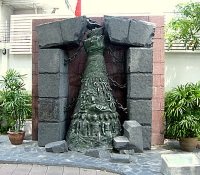
Tour Bangkok Legacies - Kindle paperback edition
For those who prefer reading printed books rather than e-books, here's the paperback edition of Tour Bangkok Legacies, which will help you along as you explore the streets of Bangkok and discover its old treasures. It's complete with historical descriptions and directions on how to get to these places.
My Kindle paperback edition
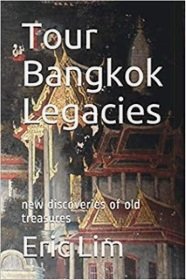
Search Tour Bangkok Legacies with DuckDuckGo
Related pages
Tour Bangkok Legacies
new discoveries of old treasures
My Kindle edition
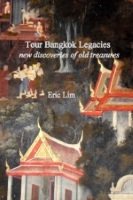
My Smashwords edition
